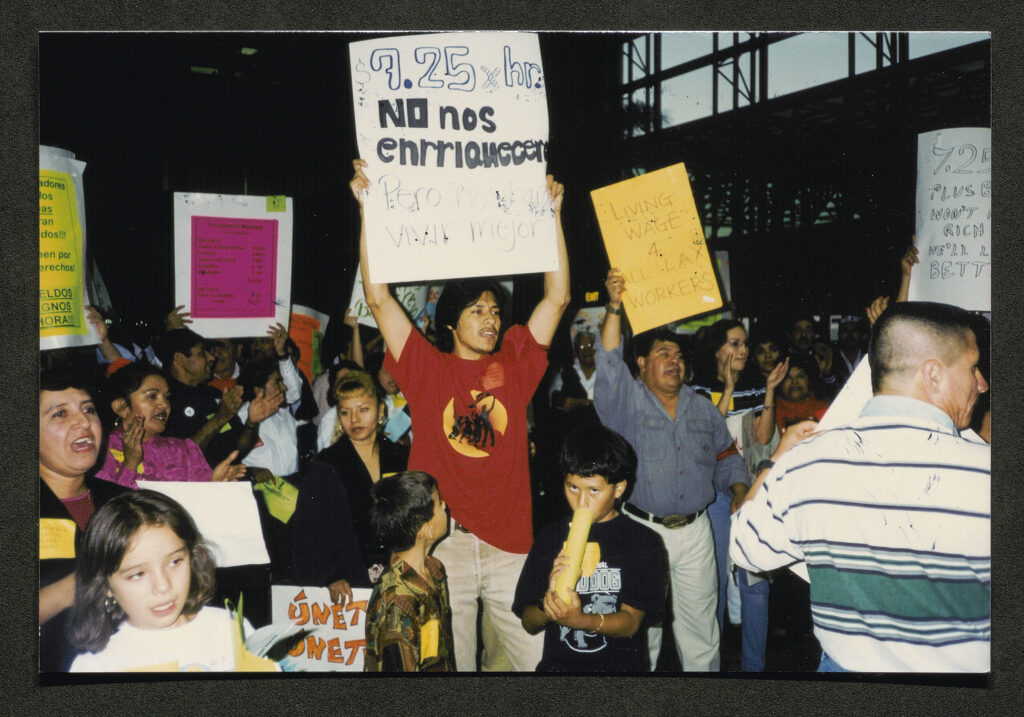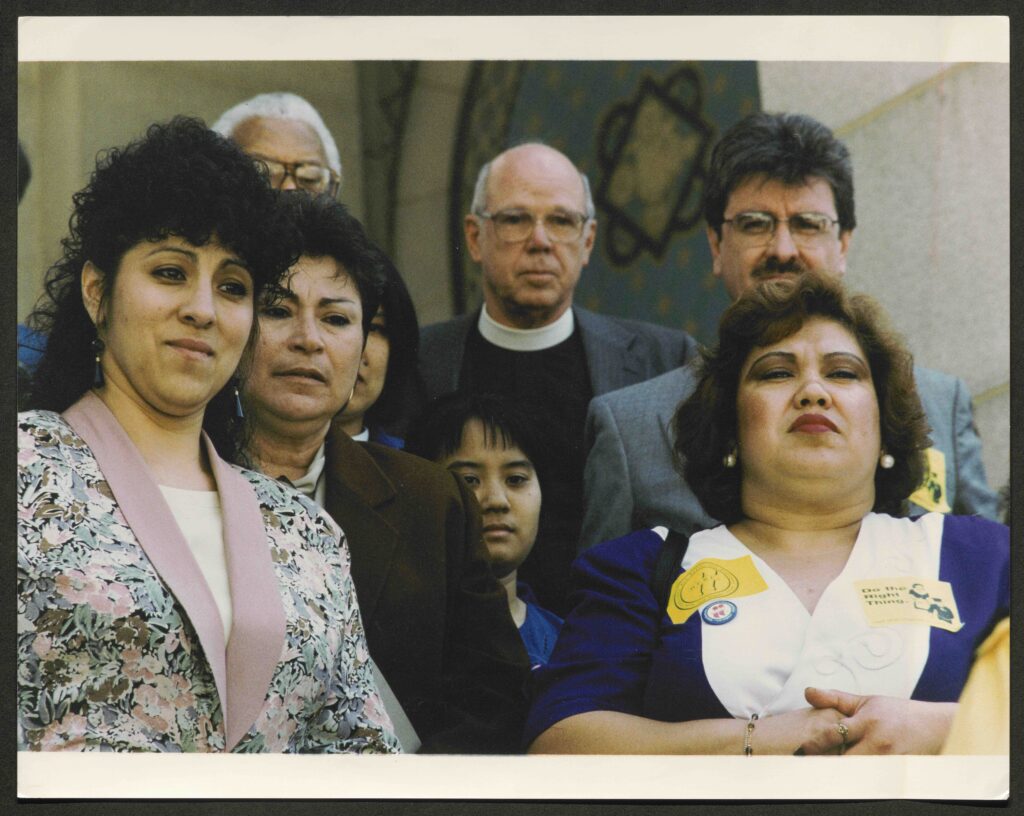
As written, the Los Angeles Living Wage Ordinance only applied to large companies with contracts with the Los Angeles city government, exempting some 2000-3000 low-wage workers at the Los Angeles INternational Airport (LAX), including baggage handlers, wheelchair runners, security officers, and janitorial staff. Their exclusion from the ordinance was based on a legal technicality: while the airlines at LAX maintained contracts with the City of Los Angeles in the form of leases, thanks to a change in city policies, most services at the airport were provided by companies subcontracted by the airlines, which meant that the Living Wage Ordinance did not apply to them. The change in employment relations at LAX meant that jobs once filled by unionized workers employed directly by the airlines became low-wage subcontracted ones, with LAX workers paid wages of as little as $5.15 per hour and with no sick days, holidays, or health benefits. Mayor Richard Riordan, who had initiated the changes that enabled the subcontracting schemes at the airport, made clear his intentions to prevent the ordinance’s expansion at LAX.
SEIU Local 399, representing building trades workers in Los Angeles, had been working to unionize the subcontracted LAX workers for several years before the Living Wage campaign began. When it became clear that airport subcontractors would not abide by the new standards, Local 399 worked with other members of the Living Wage Coalition to organize massive demonstrations at the airport, including this one in October 1997. After months of pressure, the Los Angeles’ Bureau of Contract Administration ruled that the ordinance did apply to the airlines and their subcontractors, but the airlines still refused to comply. Just a few days later, 450 workers at LAX announced their intention to unionize with Local 399.
JIM NEWTON, “Mayor Trying to Keep LAX Exempt From New Pay Law,” Los Angeles Times, Oct. 2, 1997 https://www.latimes.com/archives/la-xpm-1997-oct-02-mn-38322-story.html
JIM NEWTON, “Agency Says ‘Living Wage’ Law Covers Airport Guards, Janitors; Labor: Ruling is a loss for Riordan, who seeks only voluntary compliance by airlines. Carriers vow to appeal.” Los Angeles Times, June 11, 1998. https://www.proquest.com/latimes/docview/421279834/abstract/D912AFE4172245AEPQ/211
JIM NEWTON, “LAX Security Staff Begins Union Drive; Airport: Workers seek benefits of city’s ‘living wage’ law. They also say employers have threatened retaliation.” Los Angeles Times June 27, 1998. https://www.proquest.com/latimes/docview/421305299/abstract/8DC00FDF184D44F6PQ/1?sourcetype=Newspapers
View more photos from the Living Wage Campaign: https://www.flickr.com/photos/uclairle/albums/72177720320809410/
View more photos from the Linda A. Lotz Photo Collection: https://www.flickr.com/photos/uclairle/albums/72177720320845755/

![a crowd of religious leaders and workers gathered in Los Angeles City hall. On the right, a priest in his white collar and black suit holds a large sign reading "Stop Opposing the Living Wage Ordinance." On the left, a man stands wearing a costume, make up and a wig, posing while reading from a large book in his hands. He is dressed as the ghost of Jacob marley, wrapped in chains. In the background of the image, people hold signs reading "No Trabajo 40 Horas Para Quedarme...[illegible]" "Don't be a Scrooge, work deserves living wages," and other messages.](https://memorywork.irle.ucla.edu/wp-content/uploads/oversize_001-copy-1024x812.jpeg)
